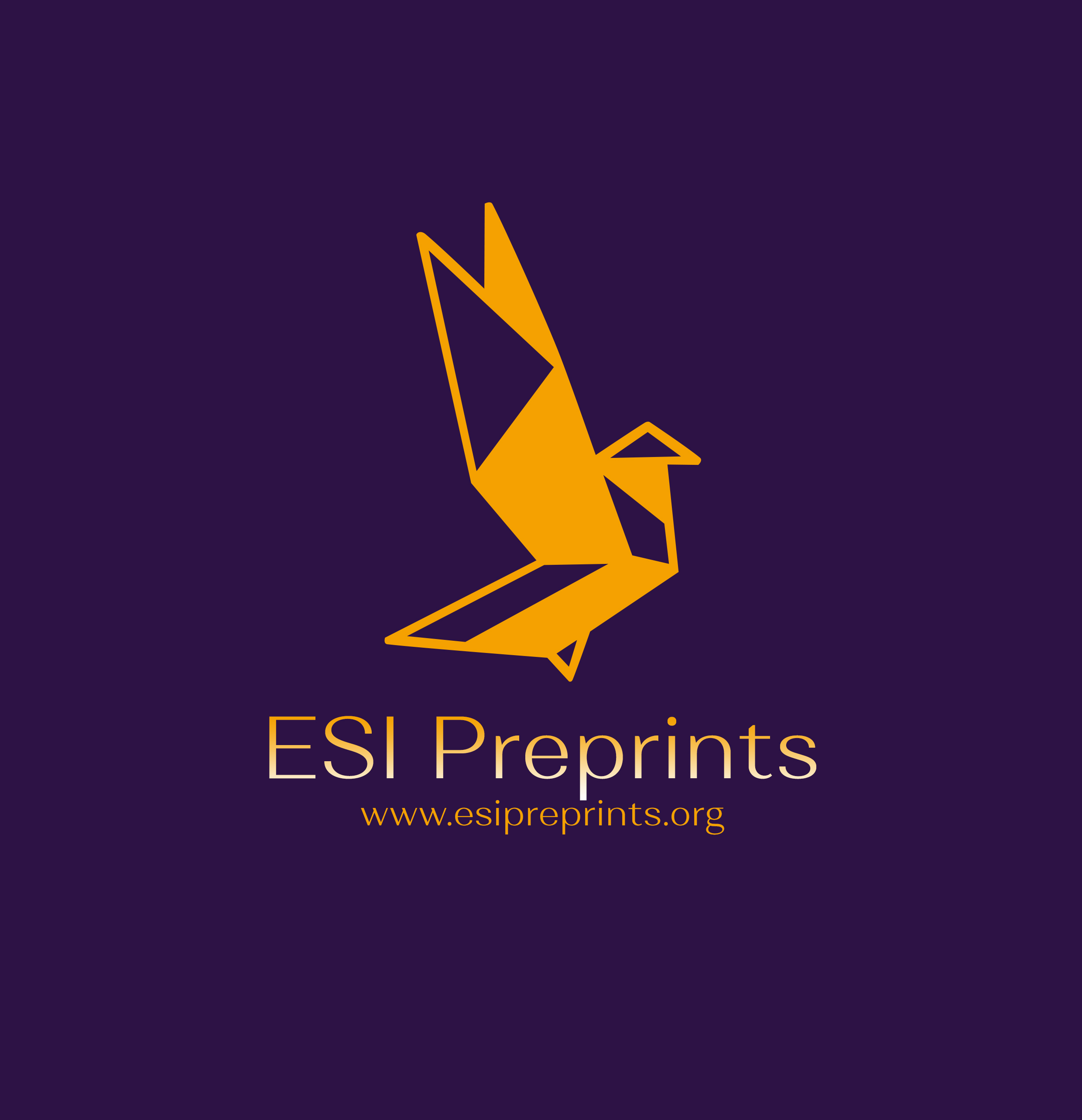Integrating Artificial Intelligence in a Morphology Course - An Analytical Study from University Students’ Perspectives
Abstract
This paper attempts to scrutinize the attitudes and opinions of English as a Foreign Language (EFL) learners on the integration of artificial intelligence (AI) in a morphology course in higher education in Lebanon as a pedagogical tool in classroom contexts in providing learners with personalized learning paths centered on their needs and strengths, offering automated feedback on activities and assignments, supplying study resources and extra material, furnishing adaptive assessments, and most importantly, identifying common errors in students’ responses that allow instructors to acknowledge the learning gaps and tailor their teaching strategies accordingly. It also aims to determine the students’ perspectives on AI’s potent role in learning. In this exploratory study, a mixed-method design and a convenient sampling of participants were utilized. A total of 62 EFL students at the public university in Lebanon participated in the study. To describe and quantify their perceptions on integrating AI in a morphology course, an online survey including closed-ended and open-ended questions, and two focus group discussions were administered. The overall qualitative and quantitative analyses of the data indicated that Lebanese EFL students have positive attitudes towards integrating AI in a morphology course as a pedagogical tool and as a fundamental part of the teaching strategies in EFL higher education classes since it provides a good source of information and aids in the teaching and learning process; however, the findings also revealed the need to train teachers and students to use AI technologies keeping in mind the potent role of the instructor in class.
Downloads
Metrics
References
2. Alhalangy, A., & Abdalgane, M. (2023). Exploring the impact of AI on the EFL context: A case study of Saudi universities. Journal of Intercultural Communication, 23, 41 - 49. https://doi.org/10.36923/jicc.v23i2.125
3. Altan, Z. (2002). The role of morphological analysis in natural language processing. Anadolu University Journal of Science and Technology, 3, 59-76.
4. Aronoff, M. (2011). Morphology. In M. Aronoff & J. R. Rebuso (Eds.), Linguistics (pp. 123-145). Oxford University Press. https://doi.org/10.1093/OBO/9780199772810-0001
5. Baker, R. S. (2016). Stupid tutoring systems, intelligent humans. International Journal of Artificial Intelligence in Education, 26(2), 600-614.
6. Bloomberg, L.D., & Volpe, M. (2019). Completing your qualitative dissertation: A road map from beginning to end (4th ed.). SAGE Publications, Inc.
7. Booij, G. (2005). The grammar of words: An introduction to linguistic morphology. Oxford University Press.
8. Buckingham, S. (2019). Ethical considerations for AI in education. Learning, Media and Technology, 44(2), 163-177.
9. Byles, R., Lea, K., & Howe, R. (2023). Exploring student perspectives on generative Artificial Intelligence tools in higher education: A survey-based study. The University of Northampton. https://bpb-eu-w2.wpmucdn.com/mypad.northampton.ac.uk/dist/0/18842/files/2023/10/AI-survey-report_9-Oct23.pdf
10. Chen, X., & Schwartz, M. (2018). Morphological awareness and literacy in second language learners: A cross-language perspective. Reading and Writing, 31(8), 1685-1694. https://doi.org/10.1007/s11145-018-9866-1
11. Copeland, B. (2023, December 3). Alan Turing. Encyclopedia Britannica. https://www.britannica.com/biography/Alan-Turing
12. Creswell, J. W., & Plano Clark, V. L. (2011). Designing and conducting mixed methods research (2nd ed.). Thousand Oaks, CA: Sage Publications.
13. Dabbagh, N., Fake, H., & Zhang, Z. (2019). Student Perspectives of Technology Use for Learning in Higher Education. Revista Iberoamericana de Educación a Distancia, 22(1), 127-152. http://dx.doi.org/10.5944/ried.22.1.22102
14. European Commission (2022). Artificial Intelligence and the future of education. https://ec.europa.eu/commission/presscorner/detail/en/ip_22_6338
15. Halcomb, E. J. (2018). Appraising mixed methods research. In P. Liamputtong (Ed.), Handbook of research methods in health social sciences (pp. 1051–1067). Singapore: Springer.
16. Holmes, W., Bialik, M., & Fadel, C. (2019). Artificial Intelligence in education: Promises and implications for teaching and learning. Center for Curriculum Redesign.
17. Holmes, W., Hui, Z., Miao, F., & Ronghuai, H. (2021). AI and education: A guidance for policymakers. UNESCO Publishing.
18. Idroes, G., Noviandy, T. R., Maulana, A., Irvanizam, I., Jalil, Z., Lensoni, L., Lala, A., Abas, A., Tallei, T., & Idroes, R. (2023). Student perspectives on the role of Artificial Intelligence in education: A survey-based analysis. Journal of Educational Management and Learning, 1(1). https://doi.org/10.60084/jeml.v1i1.58
19. Jamoliddinovich, U. B. (2022). Fundamentals of education quality in higher education. International Journal of Social Science & Interdisciplinary Research, 11(1), 149-151.
20. Kengam, J. (2020). Artificial Intelligence in education. https://doi.org/10.13140/RG.2.2.16375.65445
21. Kolhar, M., & Alameen, A. (2021). Artificial Intelligence based language translation platform. Intelligent Automation & Soft Computing, 28, 1-9. https://doi.org/10.32604/iasc.2021.014995
22. Naser, W. D., & Gandhi, N. (2022). Morphological analysis on the language acquisition. Journal La Sociale, 3(4), 160-165. https://doi.org/10.37899/journal-la-sociale.v3i4.697
23. Rios-Campos, C., Cánova, E. S. M., Zaquinaula, I. R. A., Zaquinaula, H. E. A., Vargas, D. J. C., Peña, W. S., Idrogo, C. E. T., & Arteaga, R. M. Y. (2023). Artificial Intelligence and education. South Florida Journal of Development, 4(2), 641–655. https://doi.org/10.46932/sfjdv4n2-001
24. Schmid, H.-J. (2015). Morphology. In N. Braber, L. Cummings, & L. Morrish (Eds.), Exploring language and linguistics (pp. 77-110). Cambridge.
25. Serokill. (2020, April 10). Artificial intelligence vs. machine learning vs. deep learning: What's the difference. Plain English. https://plainenglish.io/blog/artificial-intelligence-vs-machine-learning-vs-deep-learning-whats-the-difference-dccce18efe7f
26. Yule, G. (2010). The study of language. Cambridge University Press.
27. Zapata, A. A. (2007). Inglés IV (B-2007) Unit 1: Types of words and word-formation processes in English. Universidad de Los Andes, Facultad de Humanidades y Educación, Escuela de Idiomas Modernos.
28. Zhang, K., & Aslan, A. (2021). AI technologies for education: Recent research & future directions. Computers and Education: Artificial Intelligence, 2. https://doi.org/10.1016/j.caeai.2021.100025
Copyright (c) 2024 Nawal Nabih Ayoub, Nadine Sami Joudi, Miriama Salim Bou Saba, Anthony Salim Bou Saba

This work is licensed under a Creative Commons Attribution 4.0 International License.








